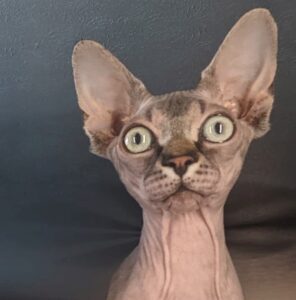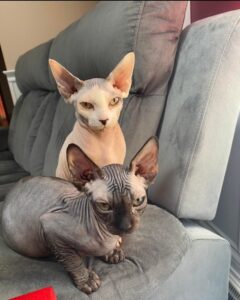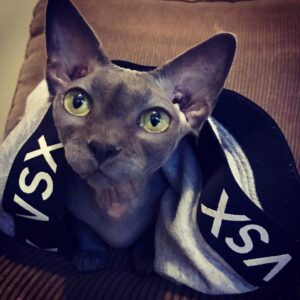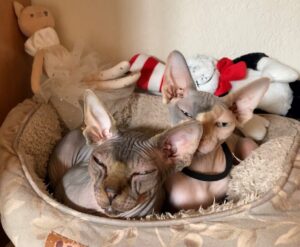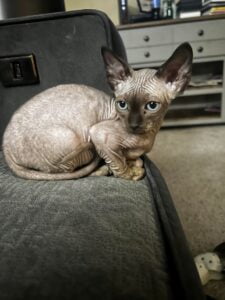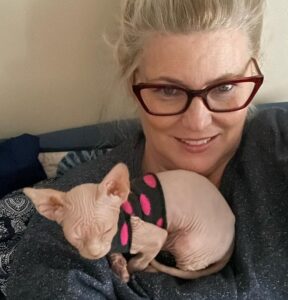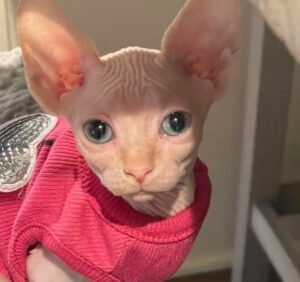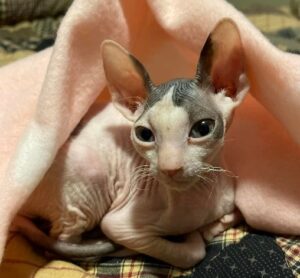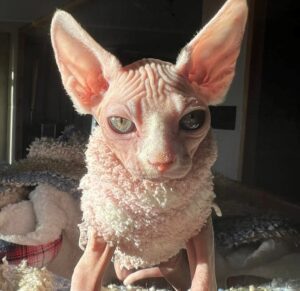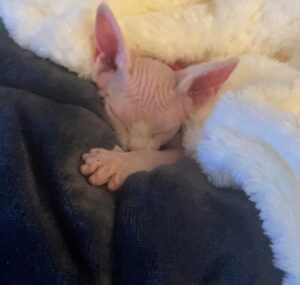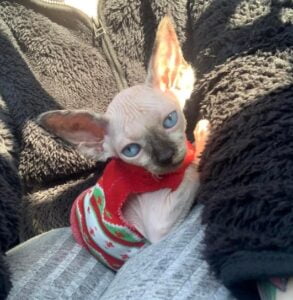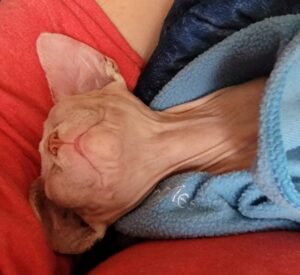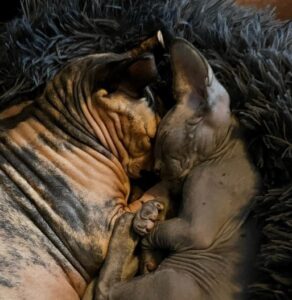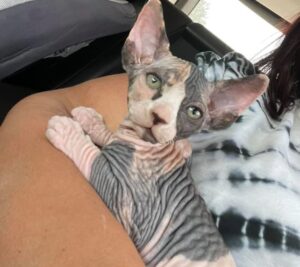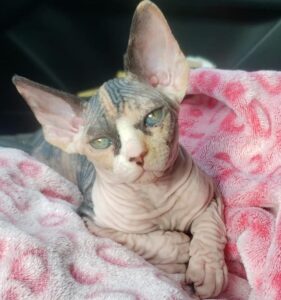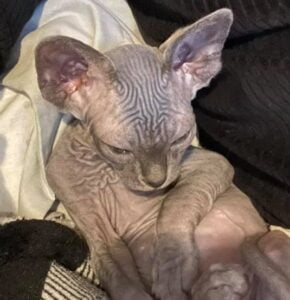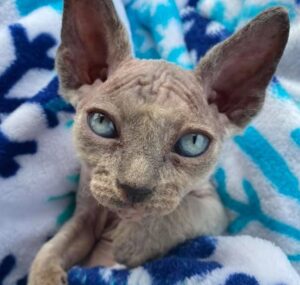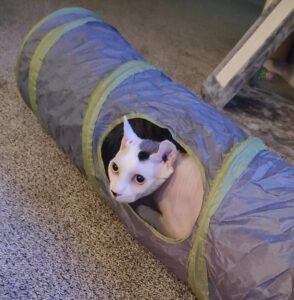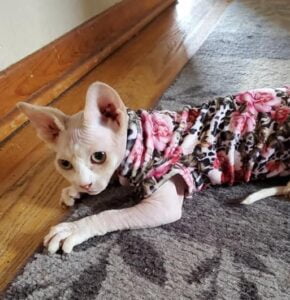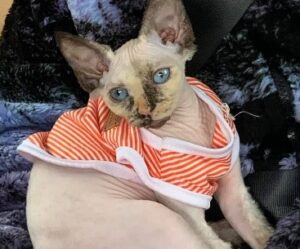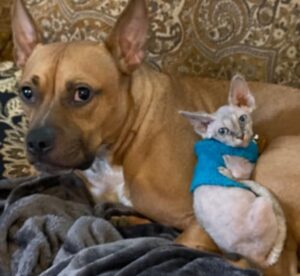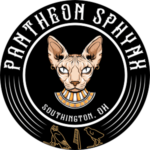Feeding
All about your Sphynx Cat's hygiene
Sphynx Cat Hygiene
Feeding Your Cat
All of our kittens are weaned using Royal Canin Mother and Kitten food which is specially formulated to provide for the nutritional requirements of new born kittens and their nursing mothers. Although many of our companions are in the process of transitioning to adult food before going to their families, all of our complementary take home kits contain a quantity of Royal Canin Mother and Kitten food to help with a smooth and natural transition to their family’s food of choice.
Our adult cats all eat Natural Balance – Limited Ingredient. This is a grain free food, and we have had the most success with the chicken flavored formulation. We settled on this brand as we have found that it is the most well tolerated (less vomiting over all) and readily available locally. In the past we also had success with Royal Canin’s adult cat food, but when comparing their ingredients and their cost to the Natural Balance, the Natural Balance was the clear victor.
Over the years we have experimented with various brands/implementations of a raw diet. Our first attempt was following the B.A.R.F. method which involved us grinding what seemed like an industrial quantity of chicken parts, eggs, and nutritional supplements and mixing up a 5 gallon bucket of pink sludge in our kitchen. Despite how gross that sounds, it was beneficial in a number of ways. The most evident was that our cat’s poop no longer had a caustic awful smell. No joke, the cat poop was odorless while they were on the raw diet. The second benefit was that the animals loved it. The instant we sat the bowl down the entire house was tucking in and eating their fill, no half eaten food bowls lying around for rodents or insects to snack on. The biggest downside was that it was labor intensive and required some specialized equipment. We purchased a meat grinder attachment for our Kitchen Aid stand mixer so we could grind inexpensive bone-in-skin-on chicken thighs and split breast halves in order to offset the cost of buying store bought ground chicken. Additionally, it took two adults two consecutive hours of chopping, skinning, mixing, and grinding to produce 5 gallons of food, that’s not involving any clean up. The upshot is that this product can easily be bagged and frozen, but we were feeding at such a volume that we never had any spare on hand. We experimented with Darwin’s premade raw food, which had all of the afore mentioned benefits with zero of the work. However, at the time it was prohibitively expensive and required a substantial amount of freezer space to keep any sort of supply on hand. That being said for a one companion household we would strongly recommend the raw food option if is something that you are interested in.
The general rule is that the food should not go by the litter. So really any place that is convenient for you and is easily accessed by your companion is great. We have had some success with placing the food up on a shelf so other pets cannot get to it (read dogs) and it also seemed to reduce the likelihood of the food being eaten by mice or insects.
Not really a frequently asked question, so you are getting some unsolicited advice from us. Spend the extra $2 and get your companion stainless steel food and water bowls. Believe it or not, but stainless steel is less permeable that plastic and more durable than glazed ceramic. Those are important because your companion is going to knock that food bowl over, and you can take solace in the fact that the bowl didn’t shatter while you are sweeping up food. More importantly, the bacteria that can harbor itself plastic food bowls can embed itself in your companion’s skin, resulting in unsightly black heads on their chin, and could result in other health problems.
We recommend a gradual titration process between the two food types. Begin with ¾ of a bowl of old food and mix it with ¼ of a bowl of the new food. When said bowl is empty change the mix to ½ old and ½ new, followed by ¼ old and ¾ new, ending with 100% new food. This gradual change allows for the oft sensitive companion stomachs to adjust to the new food, and more importantly you will be able to quickly determine if a new food does not agree with your companion.
We have used an array of supplements over the years. We highly recommend Purina FortiFlora which is a powder digestive supplement for cats. Our cats love the taste, and it helps promote your companion’s digestive health as well as normalize intestinal microflora ( cats suffering from diarrhea). This product comes in individual packets and powder form to easily add a sprinkle on the top of any kind of food you use.
Another is pumpkin, yes pumpkin can provide an amazing source of fiber for your cats. We are now prepared with our homemade pumpkin cubes. When we open a can, we use silicone ice trays (mini) to make several pumpkin cubes and freeze to use as needed. We use Pumpkin when our cats have loose stools and / or diarrhea. You may find that it’s a love for them or you have to get clever and mix it in their regular cat food. Please be mindful of the canned pumpkin you are giving your cat as you should avoid canned pumpkin with added sugar or flavoring of any kind.
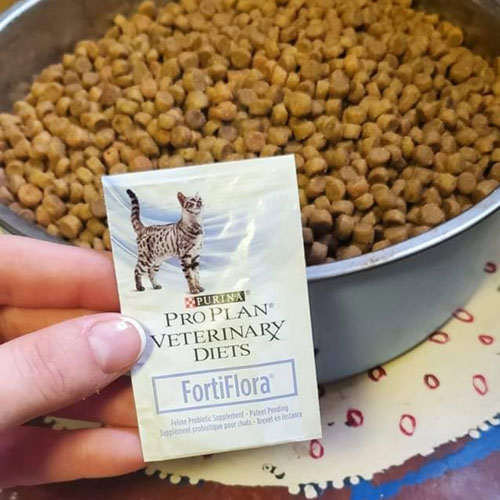
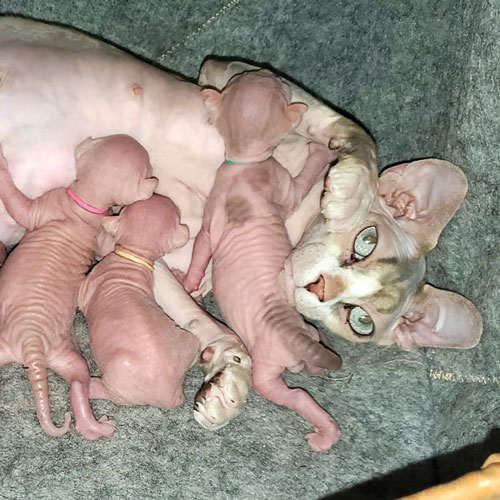
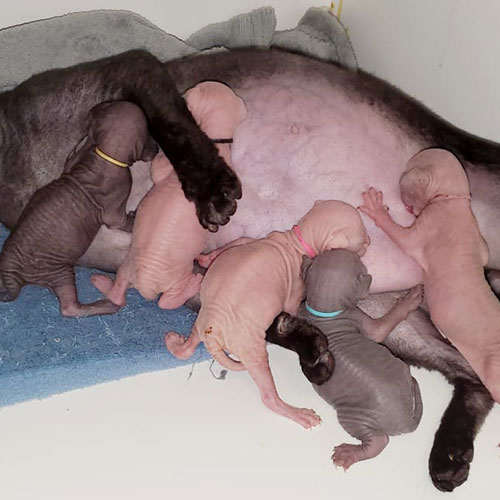

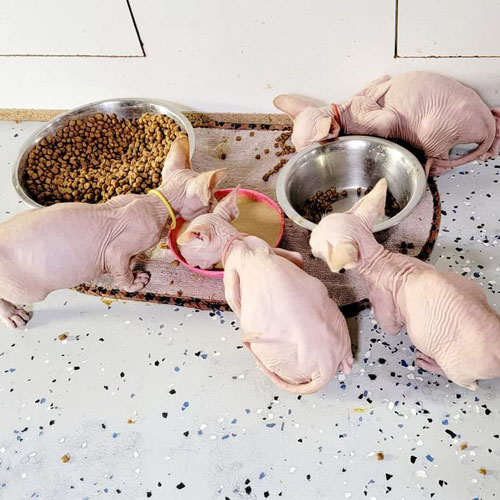
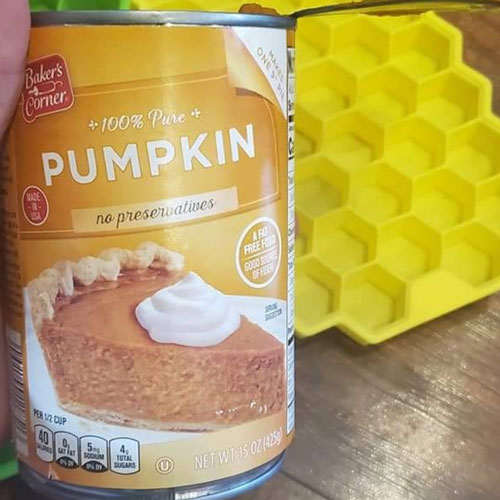
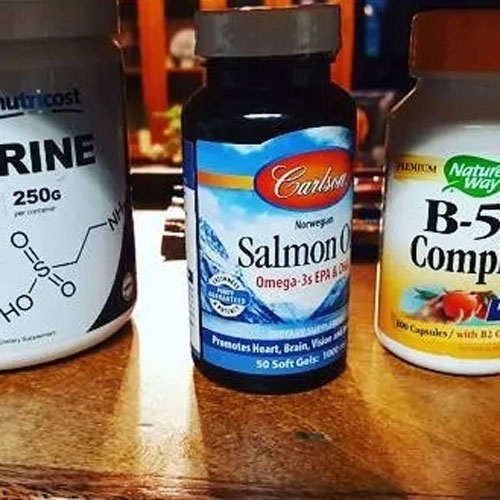
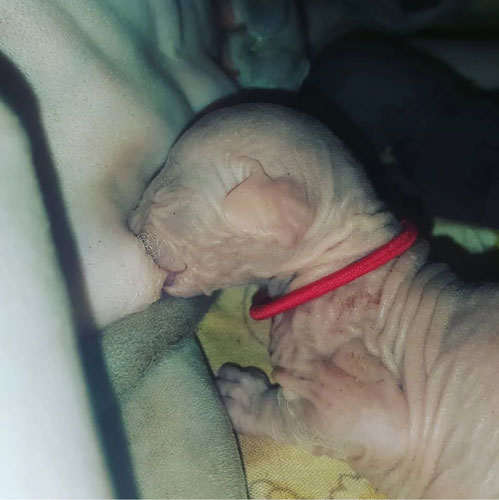
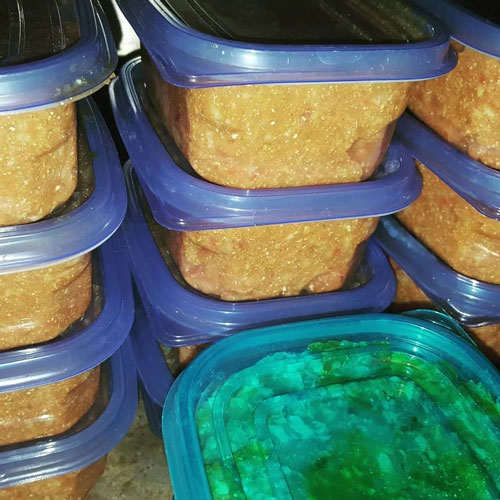
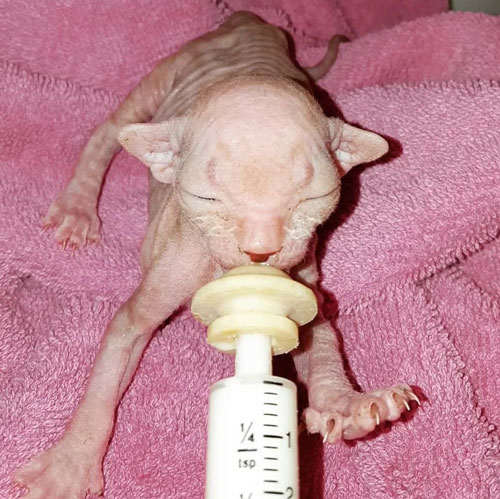
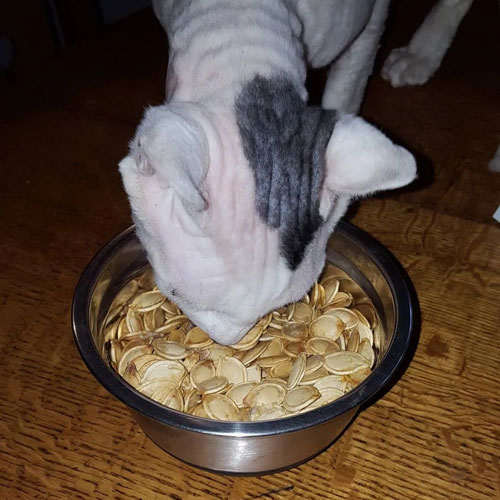
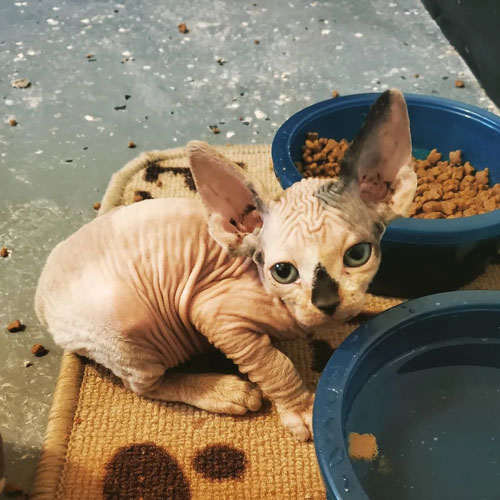
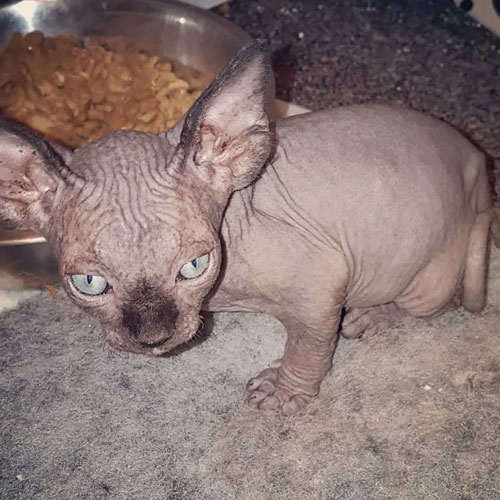
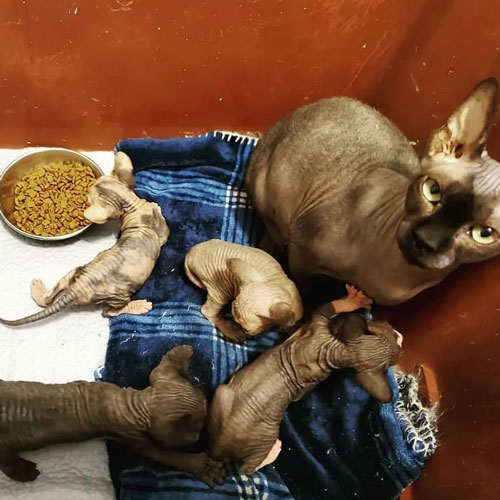
What Our Families Have To Say
